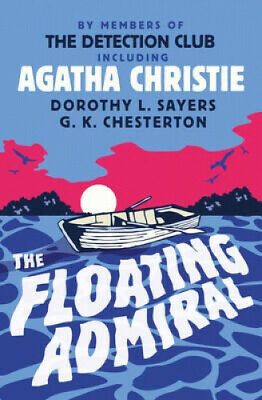When I visited my sister a few weeks ago (she is at med school), I remember noticing a game of Consequences played with her flatmates (also doing medicine) that had been pinned onto the wall. The protagonist of this story went to the doctor with an ear infection (which later became irrelevant to the story), before being diagnosed with some unrelated rare disease and then being cured. (I think at one point his head fell off and got sewn on again.) I remember playing Consequences when I was younger, and easily one of the most charming parts of it is that the resulting stories are always terrible. Yes, you may get slightly annoyed when the player after you does something bonkers (I once started the story about a fish, and then the next thing I heard was, “the fish soared out of the water and started flying”), but for the most part it’s a fun way to blow off steam for 10 minutes. The bits of paper usually end up under your bed never to be seen again, though occasionally some brave group of players (such as my sister and her flatmates) exhibit their story so that the fun occasion can be remembered.
Another such example is The Floating Admiral: a literary game of consequences published in 1931 by The Detection Club. 10 authors (Agatha Christie, Dorothy L Sayers, and G.K. Chesterton among them no less!) collaborated on a group detective novel, each writing a chapter. Victor L. Whitechurch begins proceedings with our first chapter (entitled “Corpse Ahoy!”), followed by G.D.H. and M. Cole (a husband and wife writing team!), Henry Wade, Agatha Christie, John Rhode, Milward Kennedy, Dorothy L. Sayers, Ronald Knox, Freeman Wills Crofts, Edgar Jepson, Clemence Dane, and then Anthony Berkeley steps in to craft the murder solution. The result is a cheerful and amusing detective story that slowly descends into absolute mayhem. It still makes for a fun reading experience (if you promise not to worry if you lose a thread of the plot here and there).
The true joy of The Floating Admiral comes in comparing the styles of the writers. Dorothy L. Sayers’s chapter is wonderful, as are those of Canon Victor Whitechurch, Clemence Dane, and Anthony Berkeley. The authors even share what their murder solutions would have been had they had sole authorship, which is particularly thought-provoking.
Some authors’ contributions are less strong. One wonders if Agatha Christie’s heart was truly in it: her material barely goes on for 10 pages. (Ironic then that her name is emblazoned on the front cover, as she is by far the most famous of the writers.) G.K. Chesterton also stepped in after completion to write a prologue, one that alluded to all the upcoming twists and turns. Regardless of not liking Chesterton much myself, I would advise readers to skip his contribution and come back to it having finished the book, otherwise you’ll be confused before you even start.
Whether you love the book or can’t make head nor tail of it, one cannot deny the irresistible charm and wit of how The Floating Admiral came to be – even if it proves that it is correct for a game of Consequences to end up under the bed.















